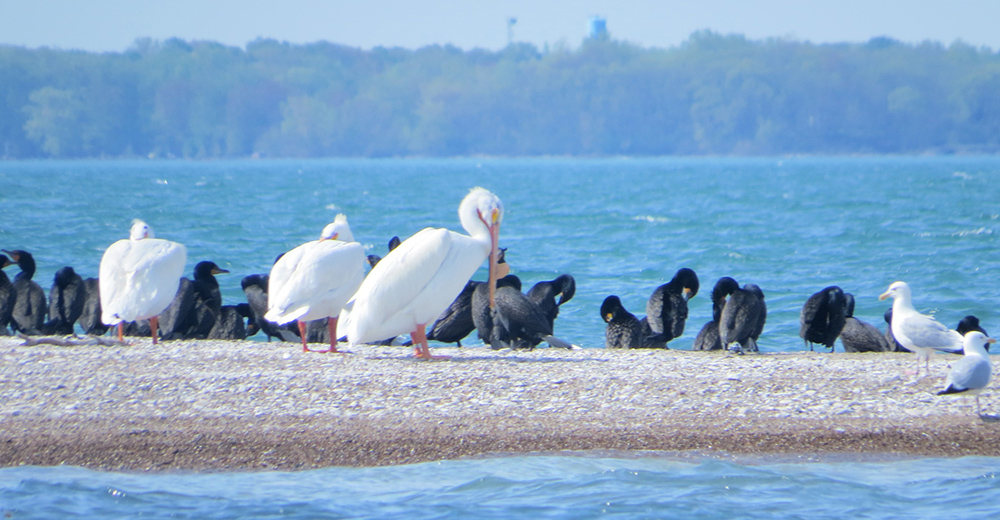In my last blog, I described how Middle Island, an 18 hectare island that is officially part of Point Pelee National Park, but out of bounds to park visitors through spring and summer and isolated in the middle of Lake Erie’s southern basin, mere yards from the invisible line that marks the U.S.-Canadian boundary, has been sadly depleted of the birds that nest there. During my last visits, May 14 and 15 of this year, I saw far fewer double-crested cormorants, great blue herons, great egrets, and black-crowned night-herons – all co-habiting colonially nesting birds – than I observed on visits previous years, and even fewer herring and ring-billed gulls and Canada geese.
Each spring, Parks Canada employees have, in a military-like operation, worked their way across the island, shooting nesting cormorants – a species whose excrement may harm native southern plants that have a toehold in Ontario on the island, the southernmost land owned by Canada, if only by a matter of a few meters. In the States most of those plants are common.
The plan is apparently to reduce cormorant numbers to the point where such plants are protected from them – and leave a remnant cormorant population where it can’t hurt the plants. But, the shooting, plus the visits to the island through the summer to run transects and conduct studies and measure differences, manages to disturb not only surviving cormorants, but other birds. That would include white pelicans, officially a “species-at-risk” in Ontario, that, while not increasing in numbers overall, is in the process of establishing nesting “outposts” in the uninhabited islands of the lower Great Lakes. On the 14th I watched in dismay as a group of 15 pelicans were chased away by Parks Canada’s shooters. The next day, in the absence of any Parks Canada gunmen, my friend, Vicki van Linden, and I documented three pelicans finally able to put down on the island. It is a shame they’re kept from nesting there as it is perfect habitat for them. There are many places where the plant species of concern grow – most places, in fact – but not many where colonial waterbirds can nest.

Of course, little or nothing can be done about other threats to the plants, including hybridization with exotic, related species, competition with garlic mustard and other exotic non-native plants, and infestations by emerald ash borers and other non-native pests and diseases, all of which will take their toll with or without cormorants.
The “conservation” argument wears thin, and I can only speculate as to Parks Canada’s motivation, but a plethora of technical papers have emerged detailing the results of the killing, counting plants, and documenting the island overall. Other researchers are barred from being there. It’s like a sequestered, tax-funded domain serving the careers of a small group of people, in private, with only the minimal scrutiny we can provide from a distance. It’s heartbreaking to see for those of us who love nature and cherish a world in which there is room for both forest plants and island-nesting colonial waterbirds, who have enough challenges without having to face the disturbances and killing visited upon them by Parks Canada.
Keep Wildlife in the Wild,
Barry
